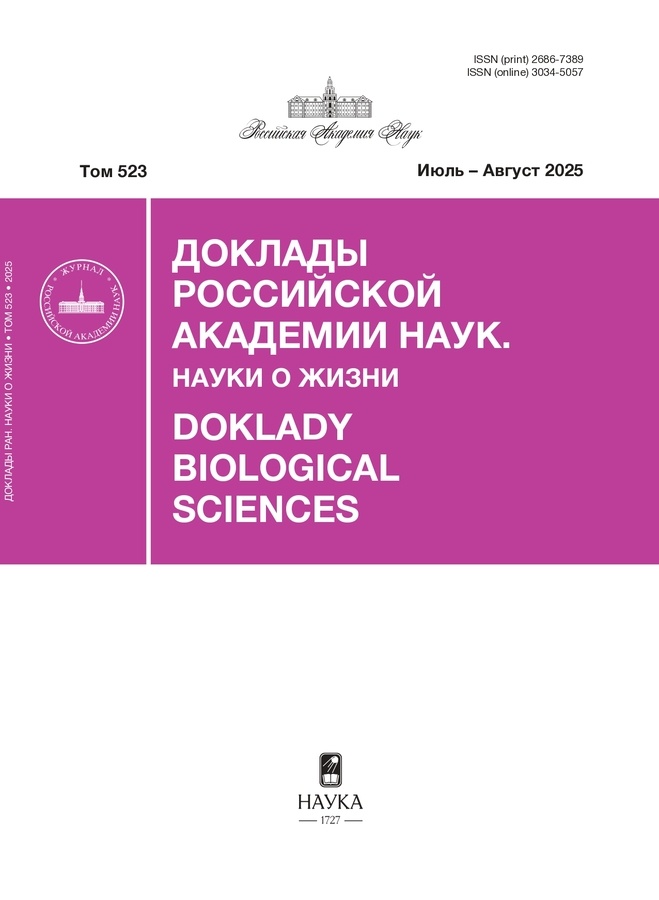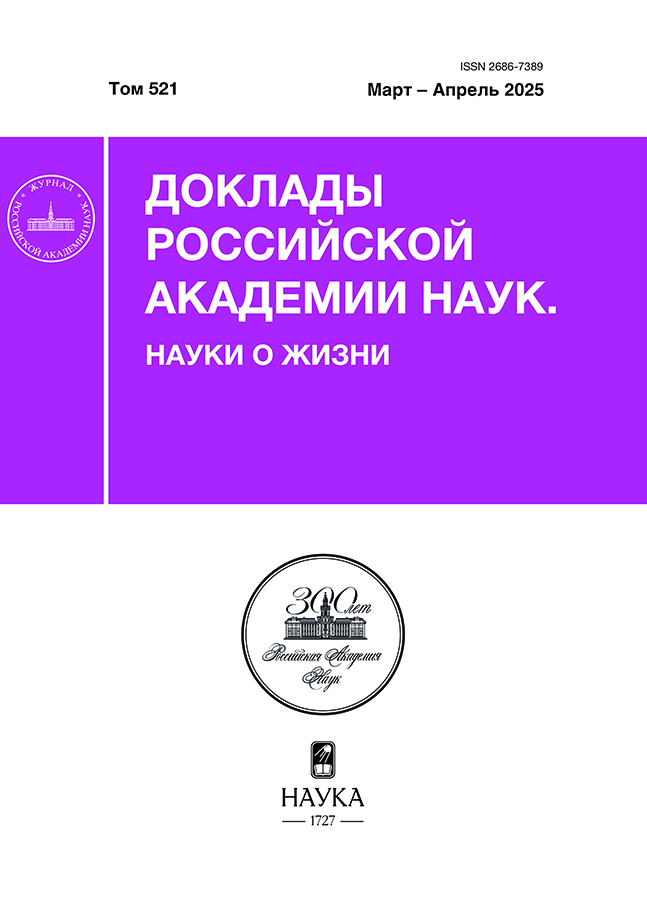The role of photobiomodulation therapy in reducing stress-induced changes in the hippocampus of rats during septoplasty modeling
- Authors: Kotov V.N.1, Kastyro I.V.1, Ganshin I.B.1, Popadyuk V.I.1, Dragunova S.G.1, Khodorovich O.S.1, Kartasheva А.F.1, Barannik M.I.1, Sarygin P.V.1
-
Affiliations:
- P. Lumumba Peoples’ Friendship University of Russia
- Issue: Vol 521, No 1 (2025)
- Pages: 240-245
- Section: Articles
- URL: https://transsyst.ru/2686-7389/article/view/684060
- DOI: https://doi.org/10.31857/S2686738925020136
- ID: 684060
Cite item
Abstract
The aim of the study. To study the effect of photobiomodulation therapy (PBMT) on the amount of p53 in neurons of the pyramidal layer of the hippocampus after modeling septoplasty in rats. Materials and methods. Septoplasty was modeled in 48 Wistar rats. In the postoperative period, PBMT was administered to 24 rats in the early postoperative period for 2 to 6 days. Histological sections of the hippocampus were studied to determine p53-positive neurons on days 2, 4 and 6 after surgery in rats of both groups. Results. Compared with the control group (n=5 rats), in both experimental groups there was an increase in the number of p53-positive neurons in the hippocampus, however, in the group where PBMT was performed in the early postoperative period after modeling septoplasty, the number of such neurons was lower, and in some subfields of the hippocampus on day 6 it even corresponded to the control group. Conclusion. The use of PBMT in the early postoperative period after modeling septoplasty helps to reduce stress-induced expression of the p53 protein in the pyramidal layer of the hippocampus in rats.
Keywords
Full Text
About the authors
V. N. Kotov
P. Lumumba Peoples’ Friendship University of Russia
Author for correspondence.
Email: fnkc.vladislav@gmail.com
Russian Federation, Moscow
I. V. Kastyro
P. Lumumba Peoples’ Friendship University of Russia
Email: fnkc.vladislav@gmail.com
Russian Federation, Moscow
I. B. Ganshin
P. Lumumba Peoples’ Friendship University of Russia
Email: fnkc.vladislav@gmail.com
Russian Federation, Moscow
V. I. Popadyuk
P. Lumumba Peoples’ Friendship University of Russia
Email: fnkc.vladislav@gmail.com
Russian Federation, Moscow
S. G. Dragunova
P. Lumumba Peoples’ Friendship University of Russia
Email: fnkc.vladislav@gmail.com
Russian Federation, Moscow
O. S. Khodorovich
P. Lumumba Peoples’ Friendship University of Russia
Email: fnkc.vladislav@gmail.com
Russian Federation, Moscow
А. F. Kartasheva
P. Lumumba Peoples’ Friendship University of Russia
Email: fnkc.vladislav@gmail.com
Russian Federation, Moscow
M. I. Barannik
P. Lumumba Peoples’ Friendship University of Russia
Email: fnkc.vladislav@gmail.com
Russian Federation, Moscow
P. V. Sarygin
P. Lumumba Peoples’ Friendship University of Russia
Email: fnkc.vladislav@gmail.com
Russian Federation, Moscow
References
- Hassin O., Oren M. Drugging p53 in cancer: one protein, many targets. // Nat Rev Drug Discov. 2023; 22 (2): 127-144.
- Котов В.Н., Костяева М.Г., Ибадуллаева С.С., Ганьшин И.Б., Ходорович О.С., Карташева А.Ф. Регуляторная роль белка р53 в функциональной активности центральной нервной системы (обзор). // Морфология. 2023; 161 (4): 1–16.
- Lindström M.S., Bartek J., Maya-Mendoza A. p53 at the crossroad of DNA replication and ribosome biogenesis stress pathways. // Cell Death Differ. 2022; 29 (5): 972-982.
- Кастыро И.В., Хамидулин Г.В., Дьяченко Ю.Е., Костяева М.Г., Цымбал А.А., Шилин С.С., Попадюк В.И., Михальская П.В., Ганьшин И.Б. Исследование экспрессии белка p53 и образования темных нейронов в гиппокампе у крыс при моделировании септопластики. // Российская ринология. 2023; 31 (1): 27-36.
- Кастыро И.В., Романко Ю.С., Мурадов Г.М., Попадюк В.И., Калмыков И.К., Костяева М.Г., Гущина Ю.Ш., Драгунова С.Г. Фотобиомодуляция острого болевого синдрома после септопластики Biomedical Photonics. 2021; 10 (2): 34–41.
- Wu X., et al. Deep-tissue photothermal therapy using laser illumination at NIR-IIa window. // Nanomicro Lett. 2020;12:38.
- Lapchak P.A., Wei J., Zivin J.A. Transcranial infrared laser therapy improves clinical rating scores after embolic strokes in rabbits. // Stroke. 2004; 35 (8): 1985-8.
- Ando T., Xuan W., Xu T., Dai T., Sharma S.K., Kharkwal G.B., Huang Y.-Y., Wu Q., Whalen M.J., Sato S. Comparison of therapeutic effects between pulsed and continuous wave 810-nm wavelength laser irradiation for traumatic brain injury in mice. // PLoS One. 2011; 6(10): e26212.
- De Taboada L., Yu J., El-Amouri S., Gattoni-Celli S., Richieri S., McCarthy T. Streeter J., Kindy M.S. Transcranial laser therapy attenuates amyloid-β peptide neuropathology in amyloid-β protein precursor transgenic mice. // J Alzheimers Dis. 2011; 23 (3): 521–535.
- Oueslati A., Lovisa B. Perrin J., Wagnières G., van den Bergh H., Tardy Y., Lashuel H.A. Photobiomodulation suppresses alpha-synuclein-induced toxicity in an AAV-based rat genetic model of Parkinson’s disease. // PloS One. 2015; 10 (10): e0140880.
- Salehpour F., Rasta S.H. The potential of transcranial photobiomodulation therapy for treatment of major depressive disorder. // Rev Neurosci. 2017; 28 (4): 441–453.
- Karu T. Primary and secondary mechanisms of action of visible to near-IR radiation on cells. J Photochem Photobiol B. 1999;49:1–17.
- Zomorrodi R., Loheswaran G., Pushparaj A., Lim L. Pulsed Near Infrared Transcranial and Intranasal Photobiomodulation Significantly Modulates Neural Oscillations: a pilot exploratory study. // Sci Rep. 2019; 9 (1): 6309.
- Greaney J.L., Surachman A., Saunders E.F.H., Alexander L.M., Almeida D.M. Greater Daily Psychosocial Stress Exposure is Associated With Increased Norepinephrine-Induced Vasoconstriction in Young Adults. // J Am Heart Assoc. 2020; 9 (9): e015697.
- Salehpour F., Mahmoudi J., Kamari F., Sadigh-Eteghad S., Rasta S.H., Hamblin M.R. Brain Photobiomodulation Therapy: a Narrative Review. // Mol Neurobiol. 2018; 55 (8): 6601-6636.
Supplementary files

Note
Presented by Academician of the RAS I.V. Reshetov











